Feb 19, 2021
Facebook Ads for ecommerce: How to set up, analyze, and optimize your campaigns
8-MINUTE READ | By Joy Huynh
[ Updated Aug 23, 2023 ]
If you work in ecommerce but aren’t running Facebook Ads campaigns, you’re missing out on a huge opportunity to grow your business.
That’s why we teamed up with Savannah Sanchez, Founder of The Social Savannah, to show you how to set up, analyze, and optimize your Facebook Ads campaigns.
By the way, this article is based on an episode of the Marketing Analytics Show we recorded with Savannah.
Set up your Facebook Ads funnel
Most marketers get bogged down with creating hundreds of ad sets, testing different audiences, different ad placements, and different creatives. They end up with an account that is complicated and hard to manage.
However, you can make your life easier and get better results by simplifying your campaign structure. And the easiest way to do that is by creating a funnel.
According to Savannah, your funnel should include three stages: prospecting, re-engagement, and retargeting.
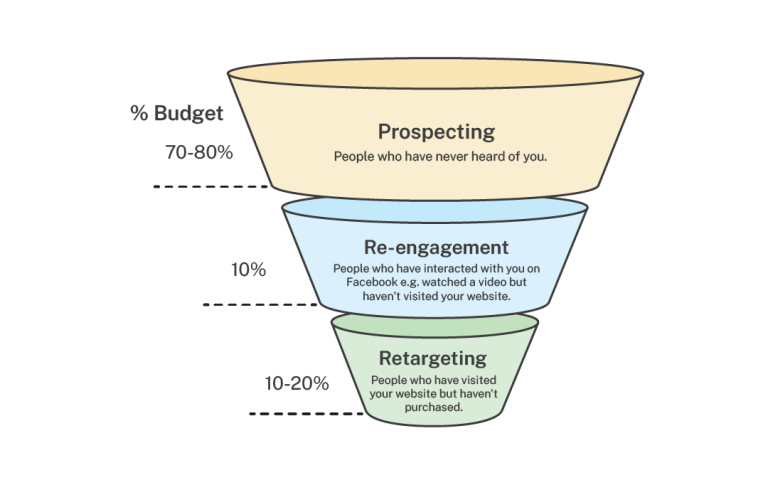
Prospecting
Typically, people go to Facebook to socialize with friends and family. Most of the time, they’re not exactly looking for a product to buy.
So as a newbie to your cold audiences’ feed, you want to stay away from the “hey, I’m awesome, buy me” approach and start with an introduction.
Use your ads to tell your audiences who you are and how your products can cure their pains.
Take this ad from Lumen as an example.
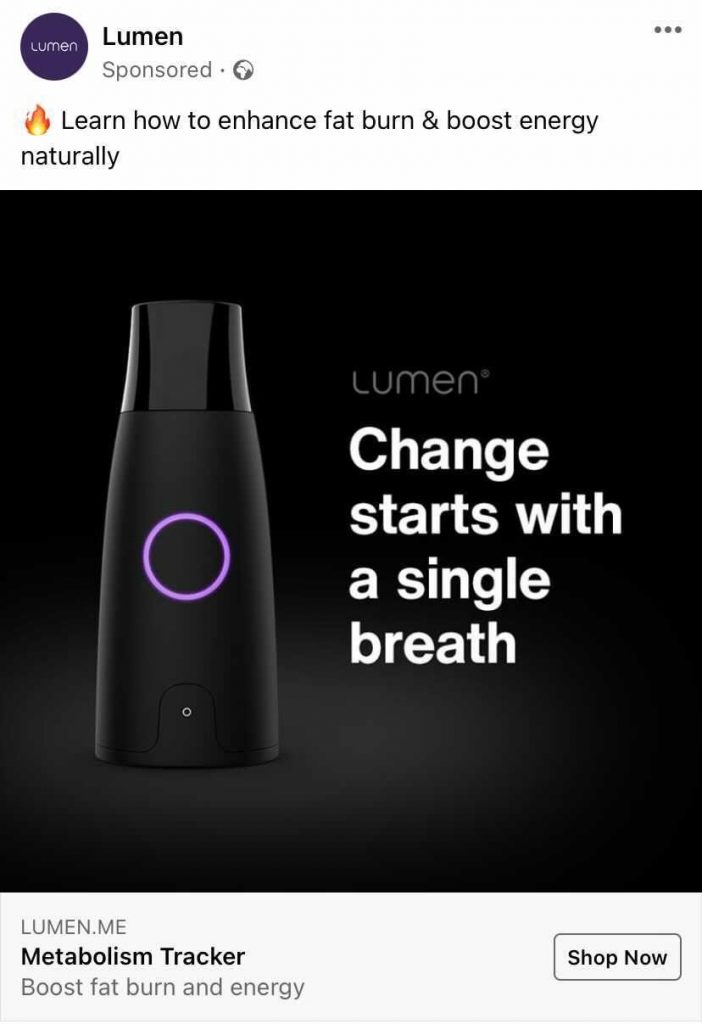
What’s great about this ad:
- The text suggests attractive benefits of the product: ”enhance fat burn and boost energy naturally,” a healthy way to lose weight as opposed to other overnight weight loss methods.
- The ad has the image of the product and implies how you can use it: “Change starts with a single breath.”
- Finally, the ad explains what the product actually is: a “metabolism tracker.”
Now, how do you choose audiences for prospecting?
- Create a lookalike audience. You can tell Facebook who your customers are — by sharing data from your website or email list, etc. — Facebook will then identify people who are similar to your customers and deliver your ads to them. When you first start, you may want to go with a 1% lookalike audience.
- Use broad interests. For example, if you’re selling iPhone cases, you can target people interested in Apple. You can also target people based on their interests, behaviors, and demographics or stack different interests inside one ad set. The idea here is to give Facebook a broad audience to find people who will convert at the lowest cost.
Since converting cold audiences is the hardest part, you’ll want to invest 70-80% of your budget on prospecting. But don’t worry if they don’t buy yet.
Re-engagement
Let’s say you have a lot of views on your Facebook videos or Instagram photos. How can you engage with your audience and ultimately convert them to customers?
By running a re-engagement campaign, of course.
You’ll want to use your ads to highlight your products’ features at this stage of the funnel. You can also use customer reviews to show how people are using your products.
I came across this video ad from Articture.
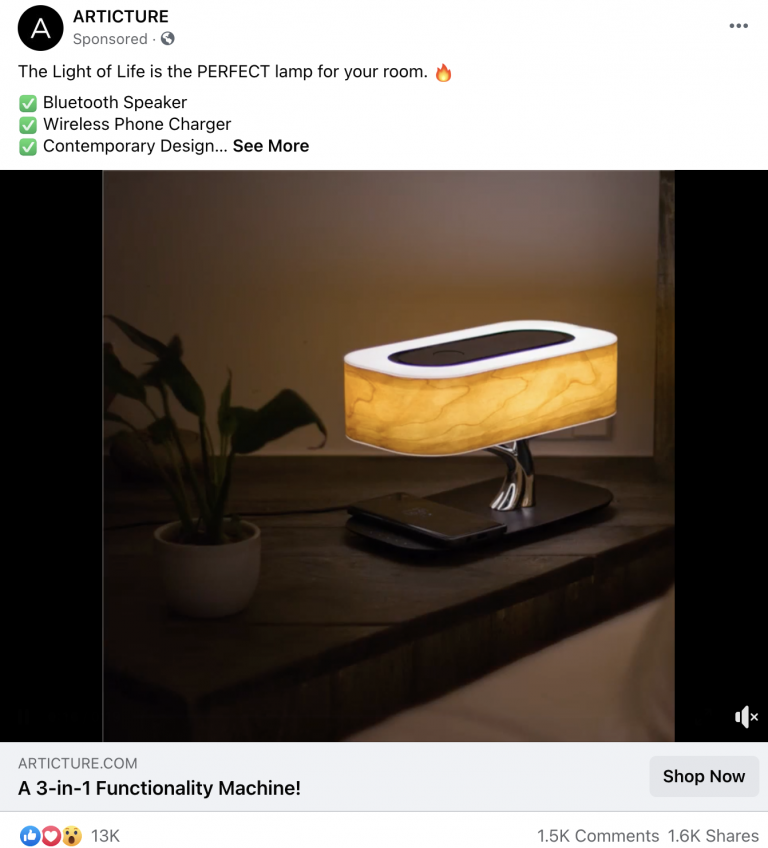
The ad shows a lamp that has a built-in Bluetooth speaker and wireless charger. How cool is that? ?
But what is even cooler is how they communicate the features through their ad.
- It’s not your ordinary lamp. It’s a “3-in-1 functionality machine.”
- The text lists all the features of the product.
- The video shows how the product works in less than 30 seconds.
Pro tip ? Facebook Ads lets you keep all the campaign’s engagements. You can easily duplicate the previous campaign and change the settings or creatives. This will help you avoid ad fatigue and drive more engagements.
For re-engagement campaigns, you can target people who have engaged with you on Facebook or Instagram before but haven’t visited your website yet.
Typically, you’ll want to spend 10% of your budget on re-engagement campaigns.
Retargeting
At this stage, people already know who you are, been to your website, but they haven’t completed their checkout. To get them over the finish line, you need to figure out what’s stopping them from making the purchase.
Is pricing a problem? Or perhaps, it’s the shipping cost. Use your ads to address their concerns.
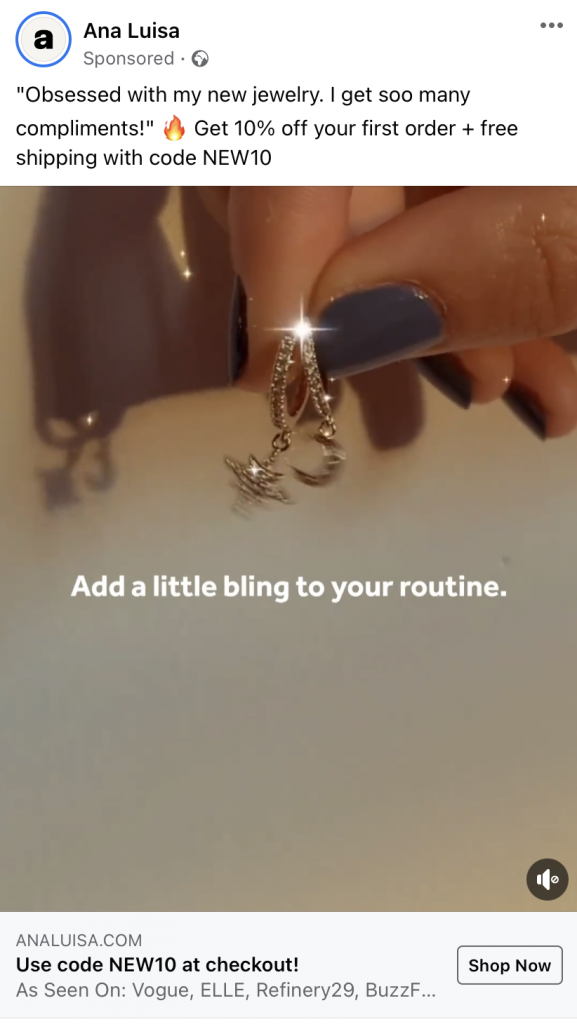
For example, this ad from Ana Luisa encourages purchases by offering 10% off the first order and free shipping.
How do you choose audiences for retargeting?
- Create custom audiences. You can target people who have visited your website over the last 30 days or 180 days.
- Your customer lists. Let’s say you have new products or offers you want to share with your existing, high-value customers. You can also include them in your retargeting campaigns.
Depending on how much you spend on prospecting, you’ll want to invest 10-20% of your budget in retargeting.
How to analyze and optimize your Facebook Ads campaigns
There are two things you want to do when analyzing your Facebook Ads campaign:
- Decide what metrics you want to track
- Build a report
What Facebook Ads metrics you should track
How do you know if your campaigns are driving sales?
Make sure to track these metrics:
- Return on ad spend (ROAS) tells you if you’re bringing in more money than what you’re spending on ads. For ecommerce brands, ROAS is a pretty good metric to measure your campaign’s success.
If you want to understand if your ads are driving purchase intent, you can track:
- Cost per add to cart, which tells you how much you’re paying for each item added to a customer’s cart.
- Cost per checkout initiated, which tells you how much you’re paying each time a customer initiates a checkout.
On the other hand, if you want to understand your ad performance, you can check:
- Click-through rate, which shows you how often someone clicks on your ads compared to the number of people who saw your ad.
- Cost per click, which shows you how much you’re paying for a click on your ad.
Build a report
The best way to stay on top of your campaigns’ performance is to build a report. Once you have all the data you need in one place, you can quickly see how your campaigns have evolved monthly, weekly, or daily.
For example, you can see your total ad spend and ROAS for the month. Or break down your data by week to see if any trends are worth noticing.
Alternatively, you can create a report break down by campaign to see:
- How much you’re spending on prospecting, re-engagement, and retargeting
- What the performance at each stage looks like
- If there is anything you can do to improve your performance
When it comes to automating reporting, Savannah is a huge advocate for Supermetrics. She’s been using Supermetrics for two years to build reports for her clients.
“With Supermetrics, what’s cool is that you can create the report once, you can automate the refreshing of the data and the emailing of your reports, and then you don’t have to really touch it ever again. You can make the same reports for every client. It’s really easy just to copy and paste with a template,” she says.
Psst! If you’re looking to jump-start your Facebook Ads reporting, feel free to swipe our Facebook Ads report template for Google Data Studio.
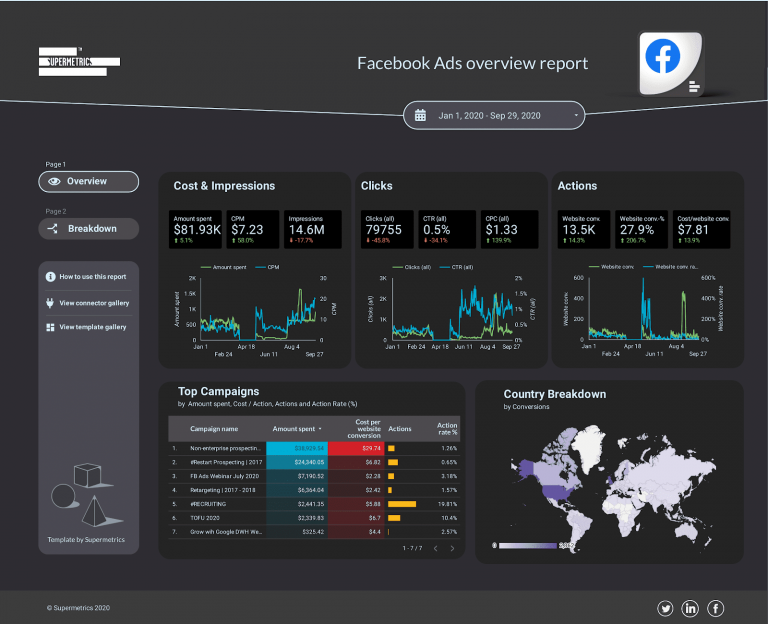
Facebook Ads creative best practices
According to Savannah, running successful Facebook Ads isn’t about crazy hacks or tactics. It’s all about creating, testing, and scaling your creatives.
There are lots of best practices, but here are some key principles you should follow.
Make it mobile-friendly
Since 98.5% of users access Facebook with their phones, you want to make sure your ad is mobile-friendly. That means getting the dimensions right. Depending on what types of ads you want to create (photo, carousel, or video, etc.) and where you want to place your ads (Facebook feed, Facebook Marketplace, or Facebook Stories, etc.), you need to follow some design guidelines.
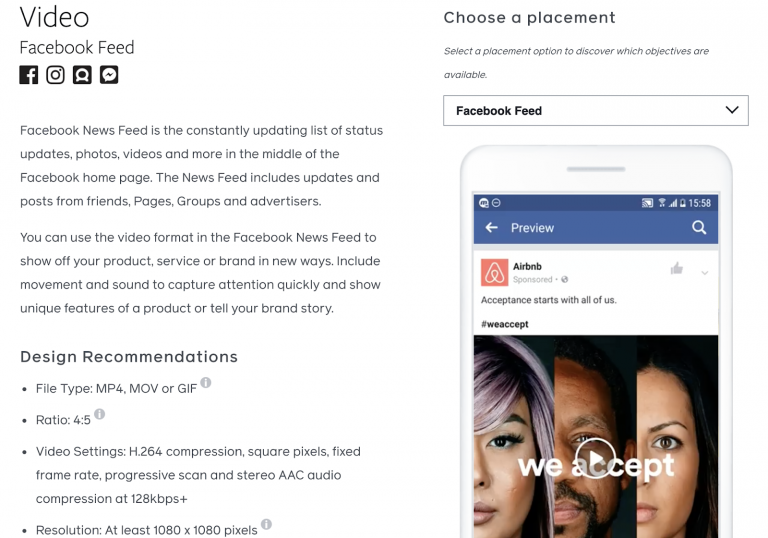
Keep it short and sweet
When people are scrolling through their Facebook feed, you only have a split second to capture their attention and make them watch your video. So if they can’t tell what your products are within the first 3 seconds, they’ll keep scrolling.
Here are some tips for creating video ads:
- Keep your videos under 30 seconds long
- Get straight to the point
- Always include captions
Make it look less like an ad
The secret to creating an attractive ad is to make it look less like an ad.
Instead of having a big production in a fancy video, you can have an influencer film some user-generated content (UGC) or a video about your product.
These UGC videos look like original content that someone will post on Facebook rather than ads. They’re more engaging and relatable.
Wrapping up
Running successful Facebook Ads campaigns doesn’t have to be hard. As long as you know how to simplify your campaign structure, choose the right creatives, and analyze your campaigns, you should see good results in no time.
Psst! If you’d like to learn more about marketing analytics, subscribe to the Marketing Analytics Show newsletter to receive an update when we publish a new episode.
Turn your marketing data into opportunity
We streamline your marketing data so you can focus on the insights.